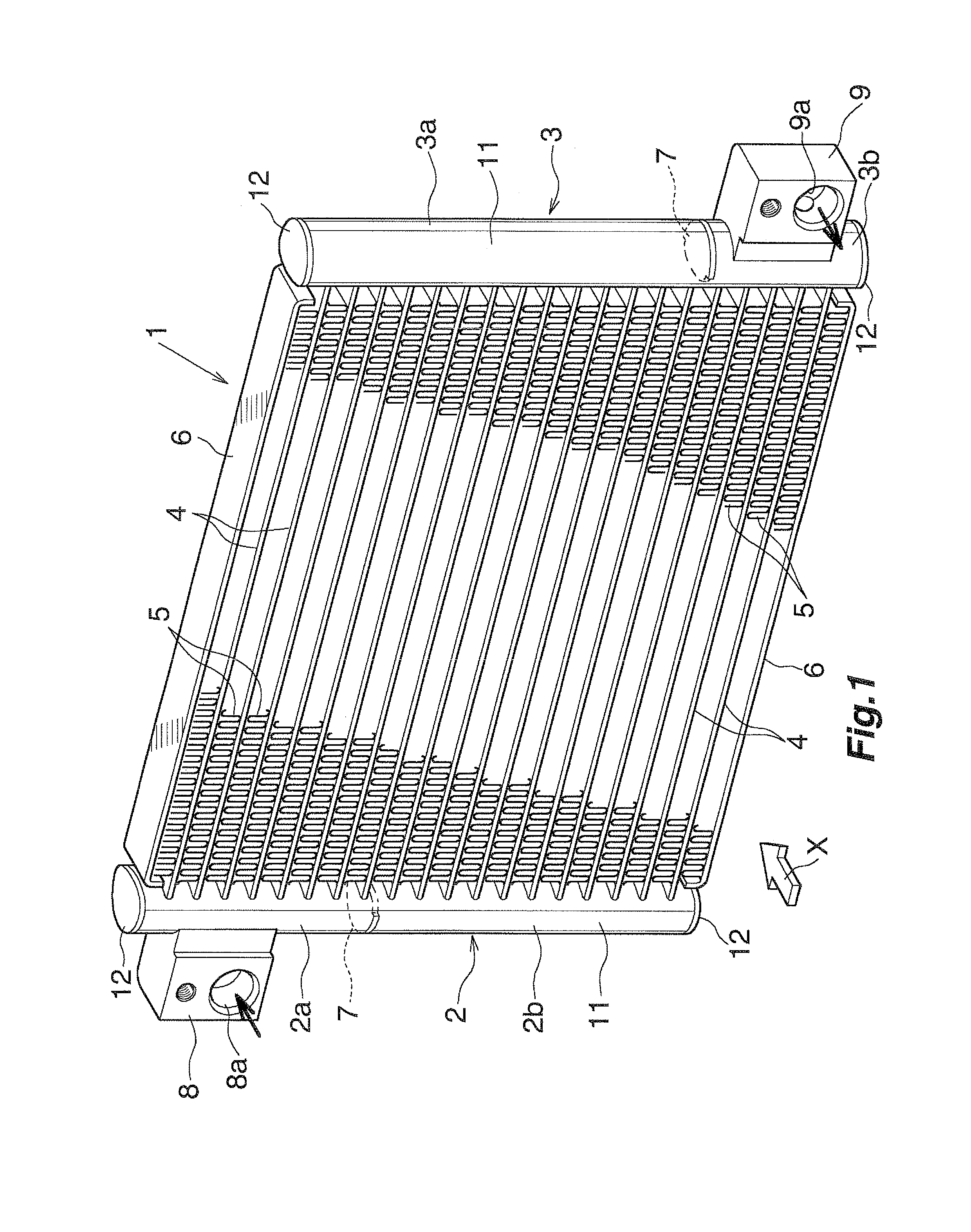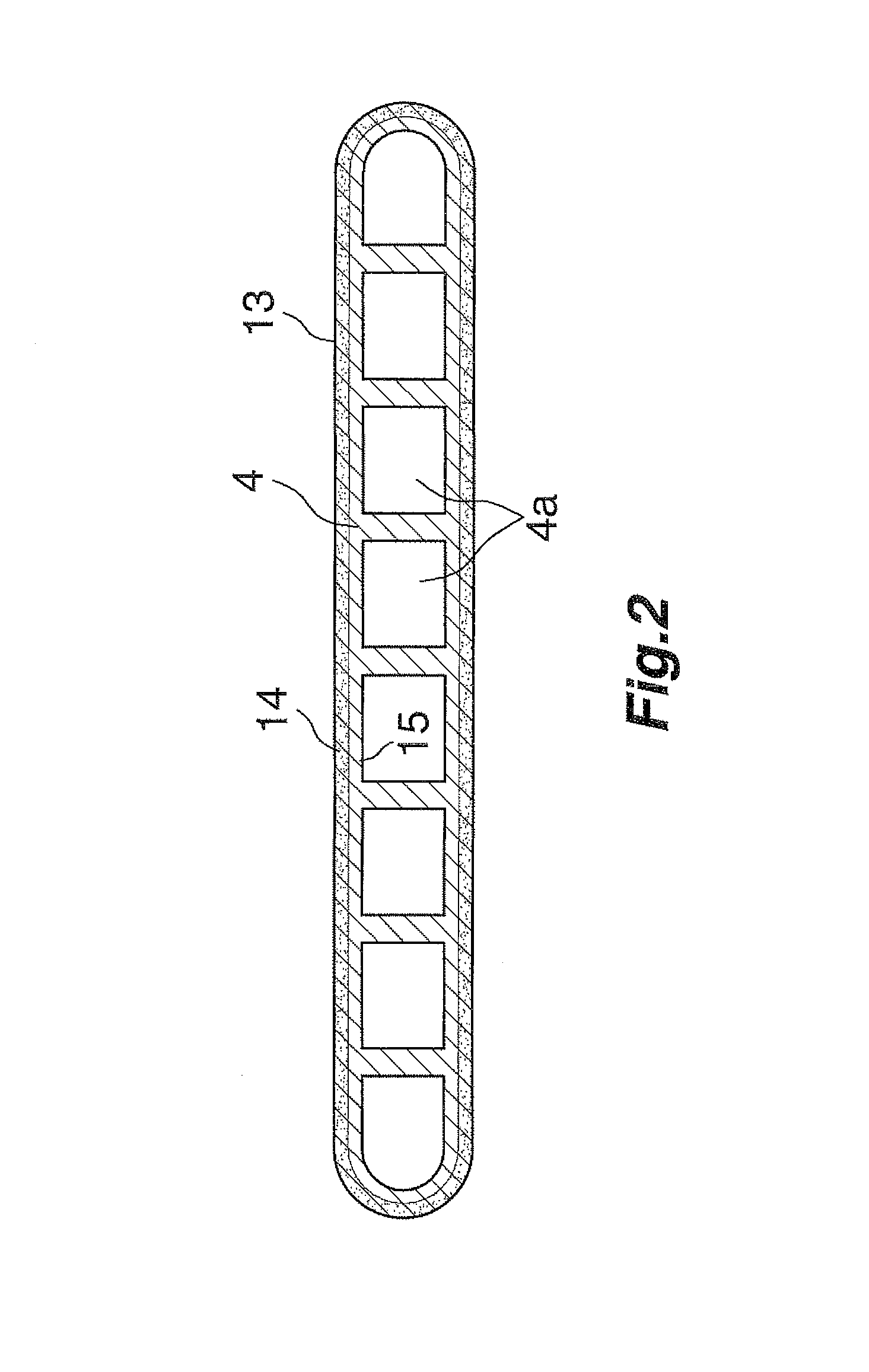Heat exchanger
a heat exchanger and peripheral wall technology, applied in the field of heat exchangers, can solve the problems of insufficient pitting corrosion prevention effect provided by the sacrificial anode layer, and the peripheral wall pitting corrosion of the heat exchange tube is relatively short, so as to improve the pitting corrosion prevention effect and reduce the corrosion speed
- Summary
- Abstract
- Description
- Claims
- Application Information
AI Technical Summary
Benefits of technology
Problems solved by technology
Method used
Image
Examples
examples
[0040]Heat exchange tubes formed of extrudate, having a cross-sectional shape shown in FIG. 2, and having a width of 12 mm, a length of 650 mm, and a largest peripheral wall thickness (the thickness of the thickest portion of the peripheral wall) of 200 μm were formed through use of an alloy containing Mn in an amount of 0.25 mass %, the balance being Al and unavoidable impurities. The alloy did not contain Cu, and contained Fe in an amount of 0.2 mass % or less and Si in an amount of 0.2 mass % or less. Cu, Fe, and Si are unavoidable impurities. Also, corrugated fins were formed through use of a brazing sheet having a thickness of 70 μm. The brazing sheet was composed of an aluminum core, and skin layers formed of aluminum brazing material and covering the opposite surfaces of the core. The core contained Si in an amount of 0.45 mass %, Mn in an amount of 1.5 mass %, Zn in an amount of 1.5 mass %, the balance being Al and unavoidable impurities. The brazing material contained Si in...
PUM
| Property | Measurement | Unit |
|---|---|---|
| thickness | aaaaa | aaaaa |
| thickness | aaaaa | aaaaa |
| particle size | aaaaa | aaaaa |
Abstract
Description
Claims
Application Information
 Login to View More
Login to View More - R&D
- Intellectual Property
- Life Sciences
- Materials
- Tech Scout
- Unparalleled Data Quality
- Higher Quality Content
- 60% Fewer Hallucinations
Browse by: Latest US Patents, China's latest patents, Technical Efficacy Thesaurus, Application Domain, Technology Topic, Popular Technical Reports.
© 2025 PatSnap. All rights reserved.Legal|Privacy policy|Modern Slavery Act Transparency Statement|Sitemap|About US| Contact US: help@patsnap.com



